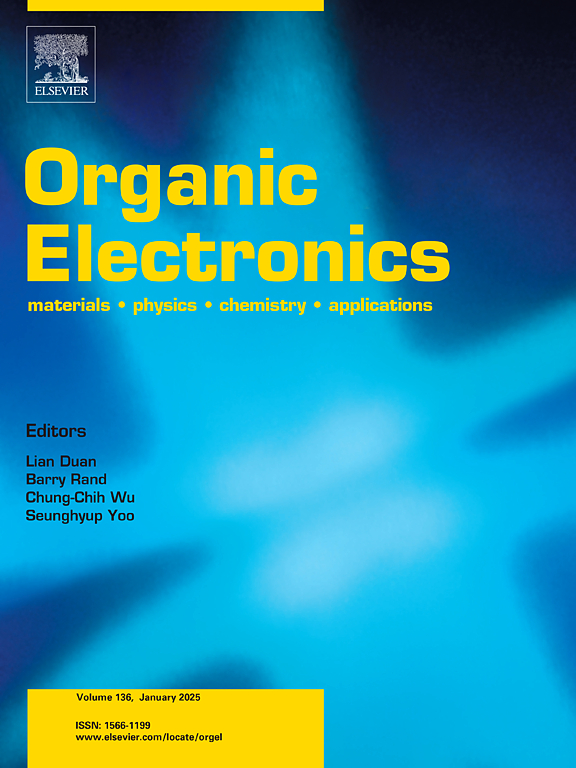Energy gap and orbital mixing in DNTT/PTCDI-C8 heterostructure
IF 2.7
4区 工程技术
Q3 MATERIALS SCIENCE, MULTIDISCIPLINARY
引用次数: 0
Abstract
Organic pn heterostructures are widely employed in emerging devices. However, charge carrier behavior in these structures is not well understood, posing a difficulty in designing and optimizing devices in a systematic manner. In this article, finite-element simulation is used to reproduce and rationalize transfer characteristics of a thin-film transistor fabricated with DNTT/PTCDI-C8 heterostructure. Introducing the concept of orbital mixing enables a fit to the experimental data, providing insights into the role of energetic, transport, and interface parameters. Spatial distribution of charge carriers and electric potential inside the semiconductor channel suggests that the device performance is strongly affected by energetic barriers formed at metal/organic and organic/organic interfaces. Finally, the importance of discretization is illustrated by creating different meshes and analyzing their impact on simulated transfer characteristics.

DNTT/PTCDI-C8异质结构的能隙和轨道混合
有机pn异质结构广泛应用于新兴器件中。然而,这些结构中的载流子行为还没有得到很好的理解,这给系统地设计和优化器件带来了困难。本文采用有限元模拟的方法对DNTT/PTCDI-C8异质结构薄膜晶体管的传输特性进行了再现和分析。引入轨道混合的概念使实验数据更加吻合,从而深入了解能量、输运和界面参数的作用。半导体通道内电荷载流子和电势的空间分布表明,在金属/有机和有机/有机界面形成的能垒对器件性能有很大影响。最后,通过创建不同的网格并分析其对模拟传输特性的影响来说明离散化的重要性。
本文章由计算机程序翻译,如有差异,请以英文原文为准。
求助全文
约1分钟内获得全文
求助全文
来源期刊

Organic Electronics
工程技术-材料科学:综合
CiteScore
6.60
自引率
6.20%
发文量
238
审稿时长
44 days
期刊介绍:
Organic Electronics is a journal whose primary interdisciplinary focus is on materials and phenomena related to organic devices such as light emitting diodes, thin film transistors, photovoltaic cells, sensors, memories, etc.
Papers suitable for publication in this journal cover such topics as photoconductive and electronic properties of organic materials, thin film structures and characterization in the context of organic devices, charge and exciton transport, organic electronic and optoelectronic devices.
 求助内容:
求助内容: 应助结果提醒方式:
应助结果提醒方式:


